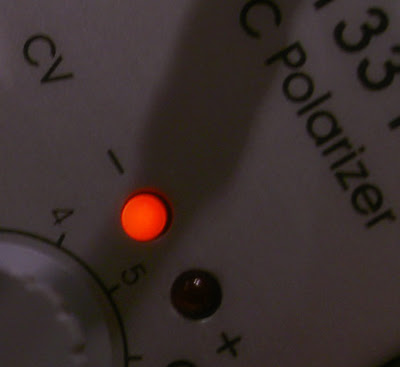
As you might have gathered, I'm a fan of Doepfer's A-133 VC Polarizer. It's neither flash nor expensive but it's often overlooked. This is a shame because it's a very flexible and compact utility module that could be useful in any Euro-rack system.

The A-133 comprises two voltage controllable DC-coupled ring modulators or bipolar VCAs. It can process both audio and CV signals which can be inverted, boosted (up to 2.5x) or attenuated. Two handy LEDs show the level and polarity of the output.
It can be used as a standard linear VCA but also to flip a signal from +ve to -ve. This can have a dramatic effect on modulation sources in a patch, particularly when using a bipolar random signal to VC the polarity. Processing two audio-rate signals results in ring modulation. The nice thing about using the A-133 for RM is the fact that you can set the intensity/ colour of the effect. Chain both units to gain voltage control over the modulation depth.
The A-133 can also be used as a cross fader. Take the two signals you want to cross-fade and patch them to the ins of units 1 & 2. Set the manual offset of the top unit to ca. +2 and the bottom unit to ca. -2. Take an LFO and mult it to the CV ins of both units. Take the outputs of both units and feed them into a mixer. When the LFO is positive you'll hear the output of the top unit and when it's negative, you'll hear the bottom output.
Anyone who has Maths, needs an A-133 to gain voltage control over its contours. As outlined in Patch Tips #1, non-linear shapes can be achieved by introducing either positive (log) or negative (exp) feedback into Maths', or indeed any VCADSR or VC LFO's CV input. You could also use the A-133 in a feedback patch with a filter to gain voltage controlled resonance.
My favourite use for the A-133 is rather more mundane: it's a handy, if basic, voltage meter! Great for checking whether you are actually getting a signal out of a module, what its polarity is and how fast it's swinging.
Hope this helps you understand the A-133 a little better. As I say, it's not flash, but I'd be lost without it.














